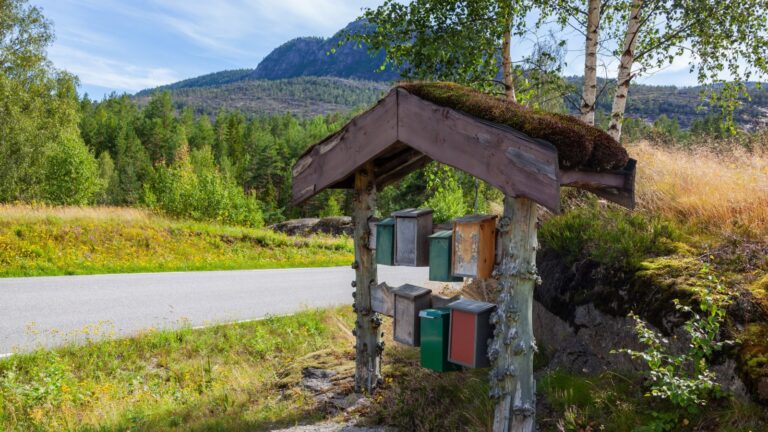Major changes to Norway’s postal services are being considered, and they could mark the end of regular deliveries to your postbox.
Collecting mail from a pickup point, as do with parcels today, could soon become the norm. That’s the major finding of a new government report now being considered.

When I was growing up in the UK, there was something a “second post”—a second round of mail deliveries that would arrive in the afternoon. By the time I moved to Norway in 2011, daily postal deliveries were the norm, and I never imagined that would change.
But in recent years, physical mail has only been delivered two or three times a week. Most notifications are now sent electronically and important mail comes to a digital mailbox. Packages have long been picked up from a nearby supermarket.
I’m receiving less mail than ever, so perhaps this proposed change is inevitable.
Decline of Traditional Mail
The amount of traditional mail sent in Norway has plummeted in recent years. “The decline in the volume of letters has been extreme,” explains Jon-Ivar Nygård, Norway’s Minister of Transport. “This means the cost per remaining letter becomes very high.”
Earlier this year, the government established a task force to examine the future of Norway’s postal system.
Their report, released today, recommends that letters no longer be delivered directly to people’s postboxes. Instead, they suggest that most letters be collected from staffed post points, such as “pick-up in store” services.
Those who still need post delivered to their homes would be able to opt for weekly deliveries.
Public Reaction
Unsurprisingly, this proposal has sparked strong opinions. In Brønnøysund, a group of locals expressed frustration in this NRK report.
“I think it’s bad enough as it is now,” says Arne Blingsli, referring to the current system of deliveries just once or twice a week. “Some days, even the walk to the postbox feels too long.”
His friend, Arne Hansen, adds, “I’m not online, and I don’t want digital post. I’m fortunate to still receive physical letters, and I depend on them.”
For people like Hansen, the task force’s proposal includes a system called “egenmelding” (“self-declaration”), which would allow those who need it to request weekly postbox deliveries. However, many are skeptical. “I’ll be disappointed if I have to take a taxi into town just to pick up my mail in bad weather,” says Liv Arnhild Lind.
Adapting the Postal System
The proposed changes don’t just address the reduced volume of letters. They also aim to make better use of resources and adapt to society’s evolving needs. One idea under consideration is expanding the role of postal workers by integrating services like the “On Your Doorstep” pilot program. This program involves delivering not just mail but also additional services directly to homes.
“We recommend maintaining a robust postal system that ensures residents can both send and receive mail nationwide,” says task force leader Elisabeth Aarsæther. However, she adds, “It’s high time to change how the state allocates money and regulates the postal service to meet both current and future needs.”
What Could the Future Look Like?
The task force’s recommendations include:
- Delivering letters primarily to staffed post points rather than directly to postboxes.
- Offering weekly home deliveries for those who request it through a simple self-declaration process.
- Continuing to deliver newspapers to postboxes at least three times a week.
- Ensuring that delivery services are geographically inclusive, accommodating those with disabilities or limited digital access.
While the full report has been sent out for consultation, it’s clear that any changes will aim to balance efficiency, sustainability, and accessibility.
A Sign of the Times
Norway’s postal system has long been a backbone of the country, ensuring communication across vast and often remote regions. But as digitalisation continues to reduce the need for traditional mail, it’s no surprise that the system must evolve.
For many of us, the idea of losing regular deliveries to our postboxes might feel like the end of an era, but it also reflects the reality of how we communicate today.
What do you think about the proposed changes? Share your thoughts in the comments below!

